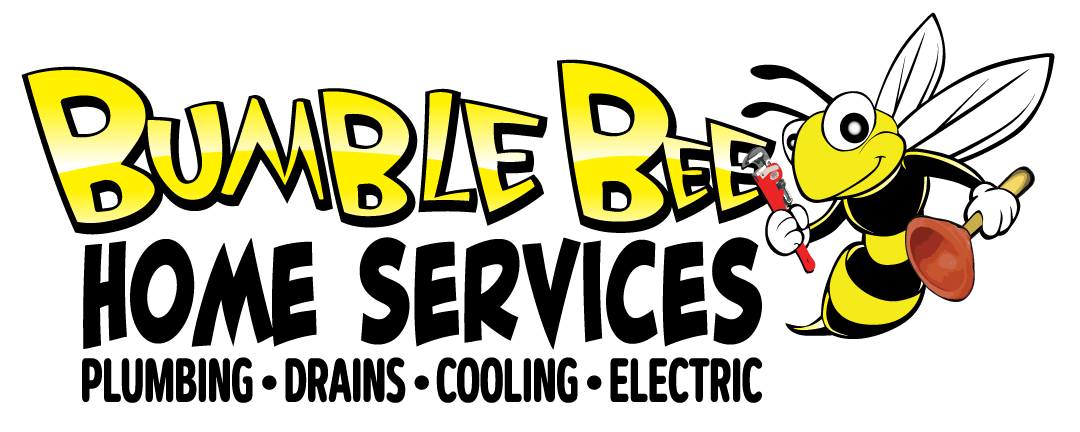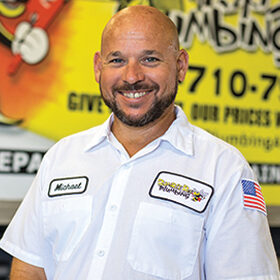Sinks drain slowly and clog for all sorts of reasons. Usually, the main culprits of slow-draining sinks or clogs are soap scum, hair, an item clogging the P-trap (pipes under your sink), or pipe damage.
As you probably know, sink clogs can come in many shapes and sizes. In some instances, you can remove these blockages yourself. All you will need to do is find a method that works best for you. The last issue is, of course, the most complex and may require a visit from your friendly and skilled Phoenix plumber for drain inspection and repair.
Are you sitting there asking yourself, “Why won’t my sink drain?” If this is the question that’s currently going through your head, don’t worry — we’re here to help. Let’s discuss the different kinds of blockages you can encounter and how you can remove them once and for all.
What Causes Clogged Drains?
If your sink won’t drain, it’s understandable if you’re feeling concerned. It’s often challenging to identify the exact cause of the blockage — but it’s important to know what you’re dealing with before you start trying different drain cleaning methods.
For instance, some clogs might be easy to remove while other, tougher blockages could require a more rigorous approach. Now that you know that many different factors can lead to drain blockages, let’s discuss the various types of clogs you could potentially be dealing with.
Food Items
When learning about what clogs drains the most, it’s impossible not to mention food scraps. Many of us are guilty of dumping leftovers into our drains after a large meal, thinking that the garbage disposal will take care of them. However, it’s important to remember that your disposal isn’t designed to handle every kind of food scrap you throw its way.
For example, you should always avoid putting coffee grounds, eggshells, bones, fibrous vegetables, and pasta down the garbage disposal (among many other items). These scraps can easily get logged in the disposal and drain, where they’ll collect and form a terrible clog.
If you tend to have many leftovers in your household, you might want to consider creating a compost pile in your backyard. Composting is an eco-friendly activity that will fertilize the soil and give plants excellent nutrients. Of course, there are some foods you shouldn’t compost. Don’t forget to do some research before creating a compost pile of your own!
Hair Buildup
If your sink won’t drain, you could be dealing with an accumulation of hair. Just like in your showers and tubs, hair can sneak into your sink drain when you aren’t paying attention. If this hair collects in large amounts, it can easily become tangled and get stuck. In many cases, hair can lead to a blockage when combined with grease, fats, or oils.
In the future, consider placing drain guards in your sinks. These small devices will collect hair — as well as many other types of debris — before it has a chance to slip into your drain. This way, you’ll prevent a clog before it has a chance to start.
Soap Scum
Soap scum, which is sometimes referred to as soap residue, can be a nuisance for many homeowners. This problem unusually occurs when soap combines with the minerals found in water.
As you probably know, this residue can quickly create a film on your shower walls and tubs. However, you might not know that the same scum can lead to stubborn clogs in your sink drains. When this residue builds up over some time, it may be one of the reasons why your sink won’t drain.
Fats, Oils, and Grease
Still asking yourself, “Why won’t my sink drain?” If so, there’s a good chance that you could have a fat, oil, or grease clog on your hands. When grease collects in your pots and pans, it’s easy to dump these substances into your drain and forget about them. Although grease becomes a liquid when hot, it can quickly solidify once it has a chance to settle in your drains. As you can imagine, this can spell a great deal of trouble for your sinks.
Since fats, oils, and grease are common reasons for clogged kitchen sinks, you’ll want to dispose of them properly. First, consider wiping off your dishes with a paper towel and disposing of them in a trash can. If there’s more grease than a paper towel can handle, you can collect the grease in a disposable jar.
Do you think you’re dealing with one of these blockages? To narrow down the cause of the problem, here are some DIY tips for fixing sink drain problems.
How to Unclog Your Bathroom Sink
When learning how to unclog a kitchen sink, it’s important to note that the process may involve some trial and error. Not every method will work for every clog. If you don’t feel comfortable handling the job yourself, don’t hesitate to contact our Phoenix plumbers for help.
Now that we’ve gotten that important information out of the way, let’s go over three different methods for getting your drains clean.
Solution #1: Fish Out the Clog
If a minor issue is the root of your sink drain problems, these tips can help you get your sink drain working properly again:
- Remove the stopper. It may pull right out (pull gently). If you feel resistance, you’ll first need to unscrew the pivot rod nut under the sink, below the stopper.
- Clean the end of the rod. This may be gunky with hair and soap scum since the end sits inside the pipe below your drain, controlling the stopper. Once the rod is clean, the stopper should easily lift out.
- Remove the clog. Bend a wire into a thin hook shape. Part of a lightweight wire hanger should work. Probe down the sink drain and pull out the messy clog. You’ll likely want to clean off the formerly hidden lower part of the sink stopper too.
- Replace the stopper. Drop the stopper back into place in the sink drain. Then, reattach the pivot rod under the sink. Stick the end of the rod back into the pipe under the sink and jiggle it, to line it up with the hole in the lower end of your sink stopper. Then, screw the nut back on and run water in the sink to check your results.
Are you hesitant to put a wire down your drain? You can also purchase a drain snake from a hardware store, such as Home Depot. You can perform a similar clog removal with this tool.
Solution #2: Use a Plunger
If you’re still unsure why your sink won’t drain, you might want to consider using a plunger. Although you probably think of using a plunger for toilet clogs, this tool can also be used in sinks.
Wires and drain snakes are a common method for removing clogs — but they don’t work for everyone. If the sink still drains slowly after trying the above tips, next, try to:
- Plunge it. Use a sink plunger and, if necessary, run a few inches of water into the sink to make the plunger work better. Plant the plunger over the drain, plunging forcefully until the water drains. Give it a few good tries–if water drains quickly/properly, the problem should be solved. The drain may slow down again soon, however, because you’ve likely only loosened the clog.
- Use an auger. These are available at your local hardware store if you don’t have one in your garage. Feed the auger snake down the drain until you feel resistance, the clog. Reel the auger back up. This should fish out the nasty clog.
- Clean the trap. You’ll see a P-shaped (or U-shaped) section of pipe beneath your bathroom sink. Put a big bucket under the pipe to catch trapped water. Unscrew the rings in the pipe at either end of the P or U-shaped pipe section. Clean out the removed section of the pipe. Then, replace it and test the sink, leaving the bucket in place, in case you haven’t fully tightened everything. You will also want to remove any water from the sink (if it hasn’t drained already).
Solution #3: Try Baking Soda and Vinegar
If your sink won’t drain after trying the methods above, you can try a baking soda and vinegar mixture. These household staples are a safe and effective alternative to harsh, store-bought drain cleaners.
Pour one cup of baking soda down the drain, followed by one cup of vinegar. Let this mixture sit and work for about 15 minutes or longer, if you have time. Once the time is up, pour a pot of boiling water down the drain to flush it out.
If none of these tips help—or if you simply want to help from an expert plumber—call Bumble Bee Home Services for professional drain cleaning in Glendale.
Get First-Class Drain Cleaning & De-Clogging Services in Glendale & Phoenix, AZ
“Why won’t my sink drain?” As we discussed above, this question can have many different answers. If you need help fixing the problem once and for all, it’s a good idea to contact a plumber for a professional drain opening service.
At Bumble Bee Home Services, our team has decades of experience diagnosing and repairing all types of plumbing problems, from stubborn drain clogs and low water pressure issues to toilet problems, sump pump problems, and more.
Do you have a clogged kitchen sink in Phoenix? We provide fast, effective, and friendly troubleshooting with our specialized equipment and familiarity with all types of plumbing systems in and around the Phoenix area. Our certified plumbers are ready to get your household running smoothly once again!
For any type of drain or plumbing services in Glendale, Phoenix, or a surrounding area, contact Bumble Bee Home Services online or call today.


